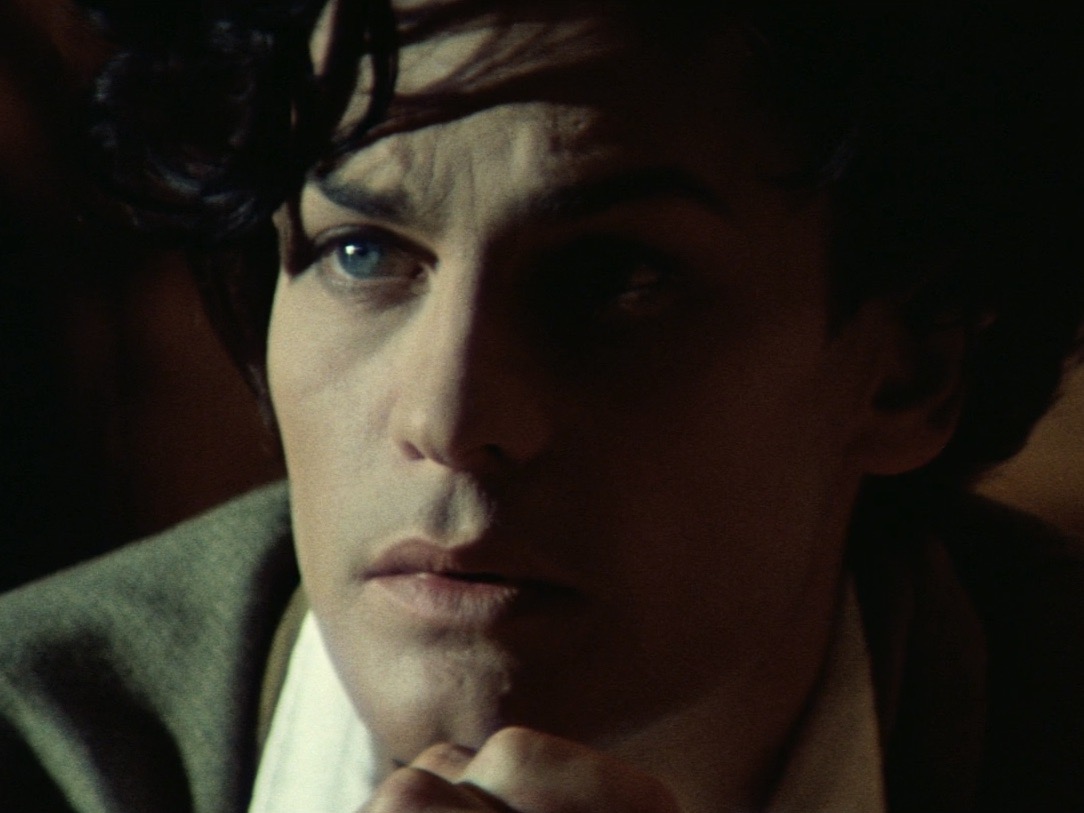
Bavaria’s King Ludwig II, one of history’s most complicated figures, is a loner tormented by unrequited love for his cousin, Empress Elisabeth of Austria, an obsession with the music of Richard Wagner, and excessive state-funded expenditures.
EN
“Typical of all of Visconti’s films beginning with Senso, The Damned and Ludwig were, along with Death in Venice, comprised of international casts for the possibilities of dubbing in various European and North American markets. All of these more recent features, though, were filmed primarily in English. But in the earlier Visconti films, the settings and subject matter remained Italian even when the source material was not. With The Stranger, shot primarily in French and Italian, this began to change, roughly coinciding with Visconti’s increased importance as an international cultural figure. By the late 1960s he had begun to detach himself from contemporary political and social concerns in Italy and elsewhere, as well as from issues of Italian history with which younger Italian filmmakers were beginning to actively engage. Guido Aristarco would later write of the “moral crisis” Visconti began to undergo after Rocco and His Brothers, “a retreat into inwardness” in which “the threads of decadence were no longer woven within the fabric of the imperatives of a great historical/moral tapestry.” [...] With the move away from Italian subject matter this inwardness is further manifested. But Visconti was not unique among major Italian filmmakers in this regard. Pasolini, for example, engaged in a similar “retreat” through his Trilogy of Life: The Decameron (1971), The Canterbury Tales (1972), and Arabian Nights (1974). The Damned, Death in Venice, and Ludwig have likewise been seen as a trilogy, although their predetermined status as such is less clear than in the Pasolinis.
[...]
With Ludwig, the slow pacing of Death in Venice continues but, in tandem with the use of the zoom, now acquires a stateliness in a film almost four hours long. In Italy, The Damned was released under Visconti’s preferred title of La caduta degli dei, the Italian translation of Götterdämmerung, or The Twilight of the Gods, a reference to the last of Richard Wagner’s operas of The Ring of the Nibelungen. But it is in Ludwig where Wagner himself materializes as a character, although, unlike Senso, there are no opera sequences and the film’s epic scale is paradoxically tied to its intimacy. And if tragic form is central to The Damned, it is no less central here. As Geoffrey Nowell-Smith has noted, the struggle over control of dynasties in Ludwig is not typically a theme of the novel but of tragedy. Borrowing a term from Eisenstein, Nowell-Smith argues that the “dominant” of Ludwig is “kingship and the destructive pairing of this with Ludwig’s homosexuality,” in which a “tragic ending is the only one possible.” [...] But neither The Damned nor Ludwig attempt to recreate the poetic forms of verse central to tragedy, although they each make use of dialogue in a different way. In The Damned, the dialogue assumes straightforward functions and often has a melodramatic explicitness. With Ludwig, Visconti returns to collaborating with Enrico Medioli and Suso Cecchi d’Amico and the script has a literary density absent from The Damned. One example of this is how it uses sleep as a motif (so central as well to Macbeth), extending the implications of Ludwig as an indecisive and withdrawn leader, so that sleeping, lethargy, and insomnia infect the entire narrative world and the bed becomes, again for Visconti, central.”
Joe McElhaney1
- 1Joe McElhaney, Luchino Visconti. and the Fabric of Cinema (Detroit: Wayne State University Press, 2021), 138-140.
NL
“In The Damned, in Death in Venice en nu weer in Ludwig is het alsof Visconti zonder scenario heeft gewerkt en alleen een slordige collage van mooie mis-en-scène rondom een thema en een personage heeft samengebracht. Structuur en opbouw ontbreken in deze films: er is geen melodrama dus en geen geschiedenis. Wat dan wel?
Een orgie van visuele luxe en stijl. Wat een allure heeft Ludwig! Het is een majesteitelijk slagschip van somptueuze beelden, zonder een rimpeltje onzekerheid, een momentje twijfel. Wie zich door al deze drukdoenerij laat overdonderen en op een dwaalspoor brengen, heeft het echt aan zichzelf te wijten. Want onder deze allure gaat niets meer schuil. Geen betekenis, geen boodschap, geen emotie, geen passie, geen empathie, geen afkeer. Melodrama en geschiedenis zijn onderdeel geworden van een esthetisch credo.
Dat heeft sterke parallellen met de weg die andere grote Italianen de laatste tien jaren hebben afgelegd: Antonioni, Fellini, Pasolini. Elk met hun eigen gevoeligheid en métier hebben ze een terugtocht ondernomen uit de betekenis en de boodschap, naar een vrijblijvender estheticisme. Van deze 'bevrijdende' generatie bevalt Visconti me nog het meest. Van Death in Venice hield ik niet, behalve van enkele momenten van grootse 'contemplatieve' cinema. Een terugkeer - en in wat voor een stijl! - naar het eerste gebaar van de cinema: een bewegend beeld dat op een scherm in een donkere zaal wordt geworpen. Hetzelfde gevoel van passieve oppervlakkigheid heb ik nu opnieuw bij Ludwig ervaren.”
Dirk Lauwaert1
- 1Dirk Lauwaert, Dromen van een expeditie (Nijmegen: Dirk Lauwaert en Uitgeverij Vantilt, 2006), 61-63.

